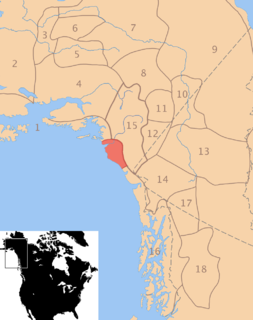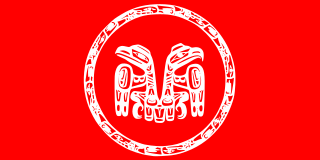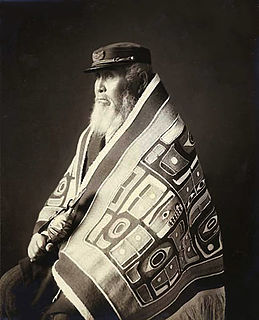 W
WThe Eyak are a Native American indigenous group historically located on the Copper River Delta and near the town of Cordova, Alaska. Today, Eyak people live in Cordova, Yakutat, and across Alaska and the U.S. Many of them do not qualify to be tribal members in the Native Village of Eyak, a federally recognized Alaska Native tribe established through the Alaska Native Claims Settlement Act in 1971, due to the enrollment qualifications that extend tribal membership only to be those who reside in the town of Cordova, Alaska for the majority of the year.
 W
WHaida are an Indigenous group who have traditionally occupied Haida Gwaii, an archipelago just off the coast of British Columbia, Canada.
 W
WThe Taku are an Alaskan Native people, a ḵwáan or geographic subdivision of the Tlingit, known in their own language as the Tʼaaḵu Ḵwáan or "Geese Flood Upriver Tribe". The Taku lived along the northwestern coast of North America, in the area that is now the Alexander Archipelago of Alaska, and on the lower basin of the Taku River of the adjoining British Columbia mainland above that river's mouth.
 W
WThe Tlingit are indigenous peoples of the Pacific Northwest Coast of North America. Their language is the Tlingit language, in which the name means "People of the Tides". The Russian name Koloshi or the related German name Koulischen may be encountered referring to the people in older historical literature, such as Shelikhov's 1796 map of Russian America.
 W
WThe Tsimshian are an indigenous people of the Pacific Northwest Coast. Their communities are mostly in coastal British Columbia and far southern Alaska, around Terrace and Prince Rupert in British Columbia, and Alaska's Annette Islands.
 W
WThe Yup'ik or Yupiaq and Yupiit or Yupiat (pl), also Central Alaskan Yup'ik, Central Yup'ik, Alaskan Yup'ik, are an Indigenous people of western and southwestern Alaska ranging from southern Norton Sound southwards along the coast of the Bering Sea on the Yukon-Kuskokwim Delta and along the northern coast of Bristol Bay as far east as Nushagak Bay and the northern Alaska Peninsula at Naknek River and Egegik Bay. They are also known as Cup'ik by the Chevak Cup'ik dialect-speaking people of Chevak and Cup'ig for the Nunivak Cup'ig dialect-speaking people of Nunivak Island.
 W
WThe Yupik are a group of indigenous or aboriginal peoples of western, southwestern, and southcentral Alaska and the Russian Far East. They are related to the Inuit and Iñupiat peoples. Yupik peoples include the following:Alutiiq people, or Sugpiaq, of the Alaska Peninsula and coastal and island areas of southcentral Alaska Central Alaskan Yup'ik people of the Yukon-Kuskokwim Delta, the Kuskokwim River, and along the northern coast of Bristol Bay as far east as Nushagak Bay and the northern Alaska Peninsula at Naknek River and Egegik Bay in Alaska Siberian Yupik people, including Naukan, Chaplino, and Sirenik of the Russian Far East and St. Lawrence Island in western Alaska